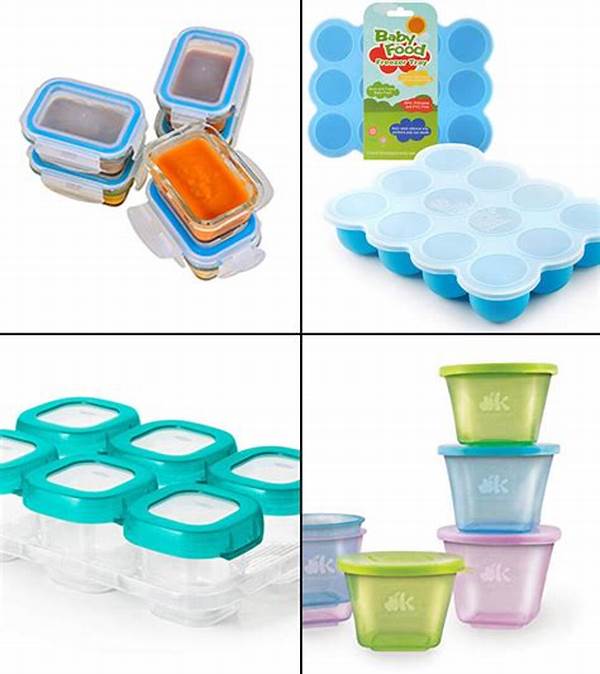Imagine walking along a bustling urban street, where towering skyscrapers are interspersed with vibrant cultural art pavilions crafted from sea containers. This is not just a futuristic dream; it is the reality of 2025—a year that promises to revolutionize public spaces with innovative and artistic ingenuity. Sea containers, once relegated to the mundane task of cargo transportation, are being creatively repurposed into stunning cultural art hubs. These architectural wonders serve as a testament to sustainable development, urban regeneration, and the limitless possibilities of human creativity. But what exactly makes these steel behemoths so appealing in today’s urban environments?
Read More : How Food Storage Containers Can Save Families Money This Year
The allure of sea containers turned into cultural art pavilions lies in their unique selling points. They are not only cost-effective and durable but also embody a certain industrial chic that resonates with urban dwellers. In a world where cities are constantly looking for ways to maximize space and minimize costs while catering to a culturally-conscious population, using sea containers for public art projects is nothing short of genius. This trend is not just a novel concept but a practical solution that aligns with both environmental goals and the community’s desire for engaging, open-air cultural experiences.
Why Sea Containers in 2025?
Reimagining the role of sea containers is a movement that has been steadily gaining traction. In 2025, this fashion has found robust roots, spurred by the pressing need for sustainable building practices. A testimonial from urban architect Jane Wilson highlighted that using sea containers reduces material waste and offers flexibility in design. “It’s like having an urban blank canvas that you can stack creatively,” she states.
Moreover, these pavilions serve as a platform to push for cultural inclusivity. Offering modular spaces that are accessible, versatile, and open to all, they foster a sense of community. Available data also suggests an increased public interest in interactive and immersive cultural experiences. By 2025, cities across the globe have recognized this potential, transforming once plain steel boxes into vibrant canvases of cultural expression.
A New Urban Trend: Cultural Art Pavilions
Cultural art pavilions created from sea containers are popping up in major cities around the world. They aren’t just functional; they are spectacular, drawing crowds and encouraging community participation. These pavilions often host art installations, community workshops, live performances, and other cultural expressions, making art accessible to all layers of society. This innovative use of sea containers is a triumph of urban design, as well as an important step in turning urban blight into thriving community spaces.
Transformative Potential
The transformative potential of using sea containers for cultural art pavilions is immense. City planners and marketers are now seeing them as an investment in the city’s cultural fabric. These pavilions are not just temporary or seasonal attractions; they could potentially redefine the urban landscape.
The overarching goal here is to create spaces where art is not an exclusive privilege but a shared community asset. Marketers and city officials alike embrace this concept, knowing it appeals to the growing demographic of young, creative urbanites eager for innovative cultural experiences.
Read More : Food Containers Designed With Temperature Control Technology
Examples of Sea Containers Transformed
Here are some primary examples of how sea containers have been revolutionized into cultural art pavilions:
Stories from the Heart of Urban Culture
These adaptive reuses tell a story of human creativity overcoming space constraints, economic limitations, and environmental challenges. Interviews with artists who have showcased their work in these spaces reveal a sense of gratitude for the access and visibility these pavilions offer.
For urban dwellers and tourists alike, these pavilions offer an experience that is both enriching and invigorating. A walk through one of these spaces unveils layers of cultural narratives and creative energy, making art palpable and approachable.
Conclusion: Shipping Containers as Cultural Catalysts
Sea containers turned into cultural art pavilions in 2025 are more than mere architectural techniques; they’re catalysts for cultural and social symbiosis. With every container transformed, cities are fostering environments where art and community coalesce, creating spaces that inspire, educate, and entertain. This trend towards cultural transformation invites cities worldwide to adopt sustainable, inclusive, and innovative solutions in their approach to urban redevelopment. As we look to the future, the repurposing of sea containers into artistic and cultural pavilions will no doubt continue to be a source of inspiration and a model of urban ingenuity.










